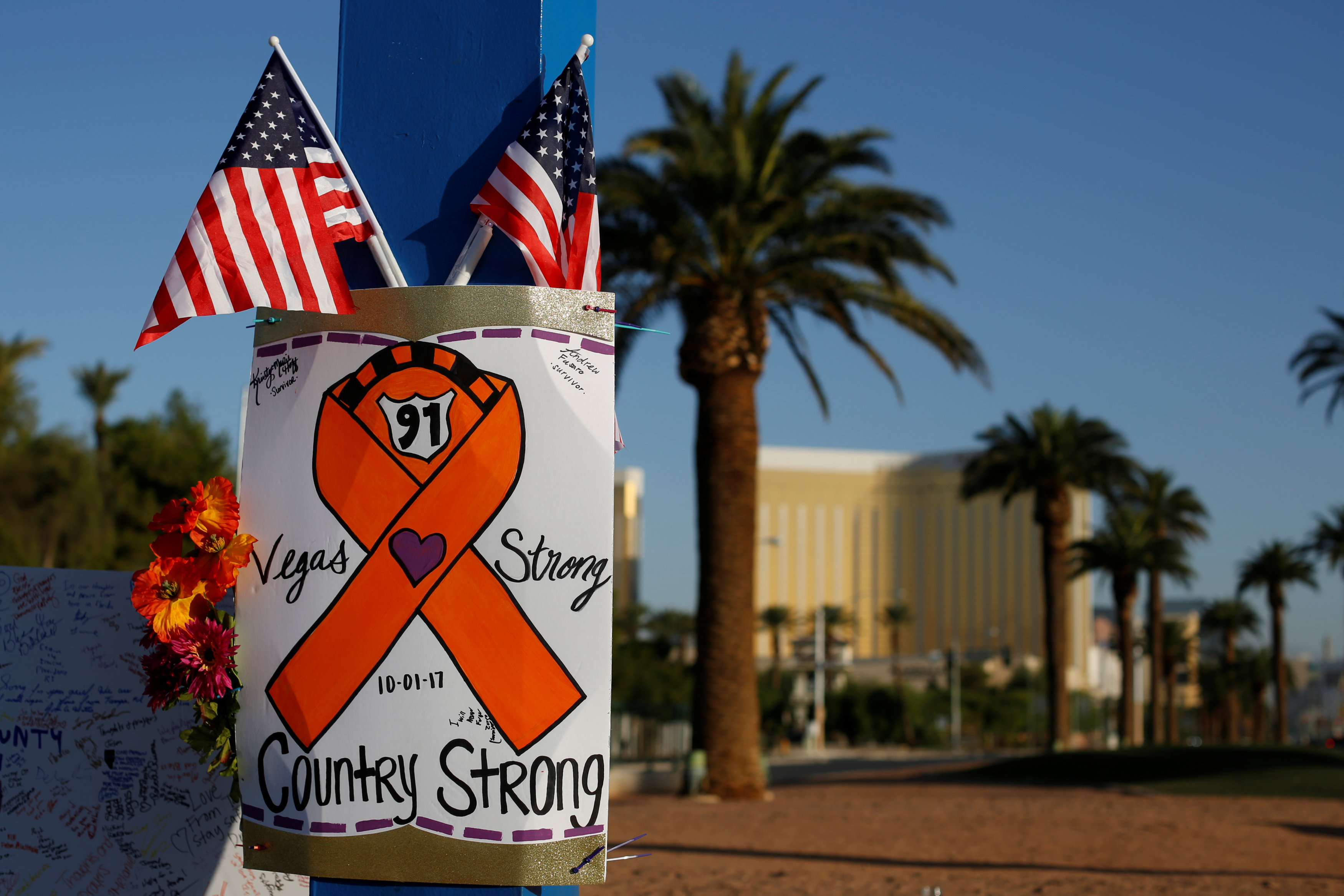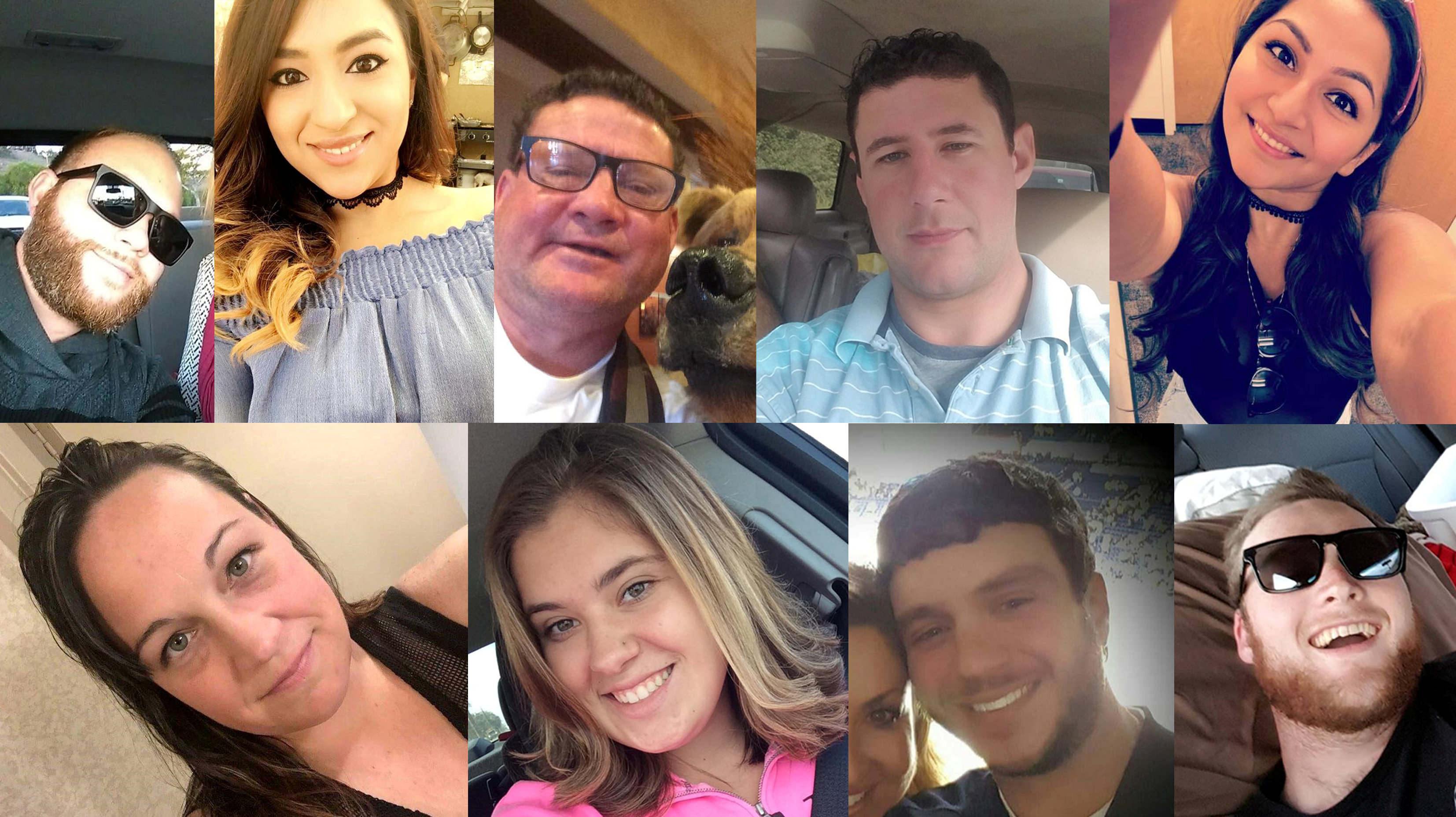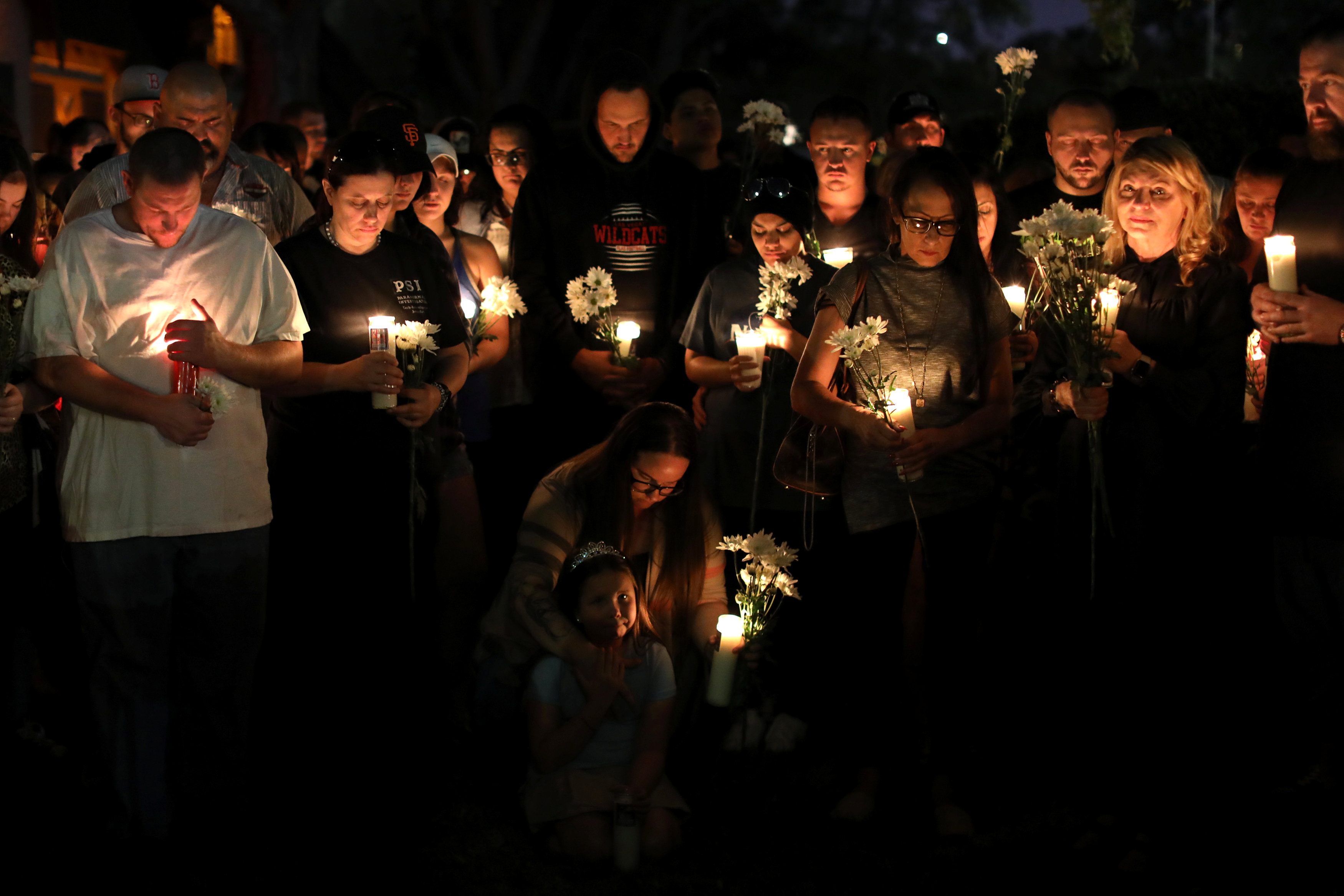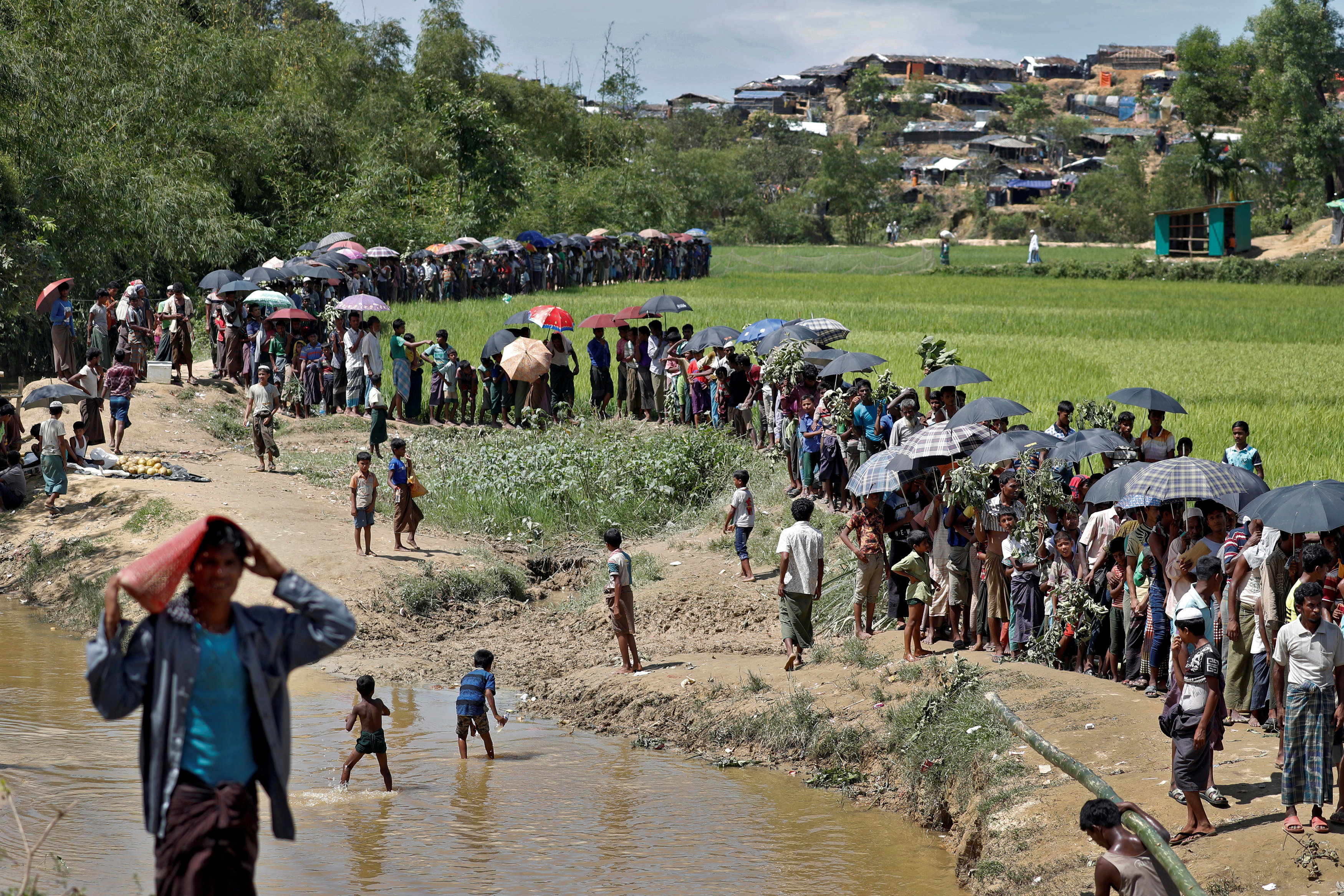
By Alexandria Sage and Sharon Bernstein
LAS VEGAS (Reuters) – The girlfriend of the Las Vegas gunman who killed 58 people and himself in the deadliest mass shooting in modern U.S. history was questioned by the FBI on Wednesday and said she had no idea he was “planning violence against anyone.”
Marilou Danley, who returned late on Tuesday from a family visit to the Philippines and is regarded by investigators as a “person of interest,” said through a lawyer that the carnage Stephen Paddock unleashed while she was abroad caught her completely unaware.
“He never said anything to me or took any action that I was aware of that I understood in any way to be a warning that something horrible like this was going to happen,” Danley, 62, said in a written statement read to reporters by her attorney in Los Angeles, where the FBI was questioning her.
A Federal Bureau of Investigation official in Las Vegas, meanwhile, said no one has been taken into custody.
But Clark County Sheriff Joseph Lombardo told reporters he found it hard to believe that the arsenal of weapons, ammunition and explosives recovered by police in their investigation could have been assembled by Paddock completely on his own.
“You have to make an assumption that he had some help at some point,” Lombardo said at a news briefing. Lombardo said the attack was the obvious outcome of meticulous planning.
“What we know is that Stephen Paddock is a man who spent decades acquiring weapons and ammo and living a secret life, much of which will never be fully understood,” the sheriff said.
Nearly 500 people were also injured when Paddock, 64, strafed an outdoor concert with gunfire on Sunday night from his 32nd-floor suite of the Mandalay Bay hotel on the Las Vegas Strip.
He took his own life before police stormed his room, bringing the total death toll to 59.
Police recovered nearly 50 firearms from three locations they searched, nearly half of them from the hotel suite. Twelve of the rifles there were fitted with so-called bump stocks, officials said, allowing the guns to be fired almost as though they were automatic weapons.
In response to a question, Lombardo said investigators were examining the possibility Paddock’s purchase of more than 30 guns in October 2016 may have been precipitated by some triggering event in his life. He did not elaborate.
If Paddock did have any accomplice, there remained no evidence as yet “to indicate terrorism” in the shooting spree, said Aaron Rouse, FBI special agent in charge of the Las Vegas field office.
Earlier in the day, U.S. President Donald Trump visited Las Vegas, marking the first time since taking office that he has had to confront a major mass shooting.

A sign is pictured at a makeshift memorial in the middle of Las Vegas Boulevard following the mass shooting in Las Vegas, Nevada, U.S., October 4, 2017. REUTERS/Chris Wattie
‘CARING, QUIET MAN’
In her statement after being questioned in Los Angeles, Paddock’s girlfriend Danley insisted she knew Paddock as “a kind, caring, quiet man.”
“It never occurred to me in any way whatsoever that he was planning violence against anyone.” Her lawyer, Matt Lombard, said Danley was “fully cooperating” with the investigation.
Danley, an Australian citizen of Filipino heritage, said she flew back to the United States voluntarily “because I know that the FBI and Las Vegas Police Department wanted to talk to me, and I wanted to talk to them.”
Danley, who was twice married before her relationship with Paddock, became a focus of the investigation for having shared his retirement community condo in Mesquite, Nevada, northeast of Las Vegas, before leaving the United States for the Philippines in mid-September.
FBI agents met her plane at Los Angeles International Airport before interviewing her, two U.S. officials briefed on the case told Reuters. As of midday Wednesday, there was no indication she was aware of Paddock’s plans, they said.
Investigators questioned her about Paddock’s weapons purchases, a $100,000 wire transfer to a Philippine bank that appeared to be intended for her, and whether she saw any changes in his behavior before she left the United States.
“Assuming she had no role in his actions, the most important thing is any light she can shed on Paddock’s motive,” said one official, who spoke about the investigation on condition of anonymity.
Danley said Paddock had bought her an airline ticket to visit her family and wired her money to purchase property there, leading her to worry he might be planning to break up with her.
Paddock’s brother Eric told reporters the $100,000 transfer was evidence that “Steve took care of the people he loved,” and that he likely wanted to protect Danley by sending her overseas before the attack.
She arrived in Manila on Sept. 15, flew to Hong Kong on Sept. 22, returned to Manila on Sept. 25 and was there until she flew to Los Angeles on Tuesday night, according to a Philippine immigration official.
Discerning Paddock’s motive has proven especially baffling given the absence of the indicators typical in other mass shootings. He had no criminal record, no known history of mental illness and no outward signs of social disaffection, political discontent or extremist ideology, police said.
Trump, touring a hospital in Las Vegas, told reporters Paddock was “very demented,” and he asked Lombardo if investigators were any closer to establishing a motive.
“We’ve had a couple good leads and we’re working our way through it,” Sheriff Joseph Lombardo told the president.
(Additional reporting by Steve Holland and Lisa Girion in Las Vegas, Karen Freifeld and Jonathan Allen in New York, Lisa Baertlein in Los Angeles, Manuel Mogato in Manila and John Walcott and Mark Hosenball in Washington; Writing by Daniel Trotta and Steve Gorman; Editing by Jonathan Oatis, Toni Reinhold, Grant McCool)














